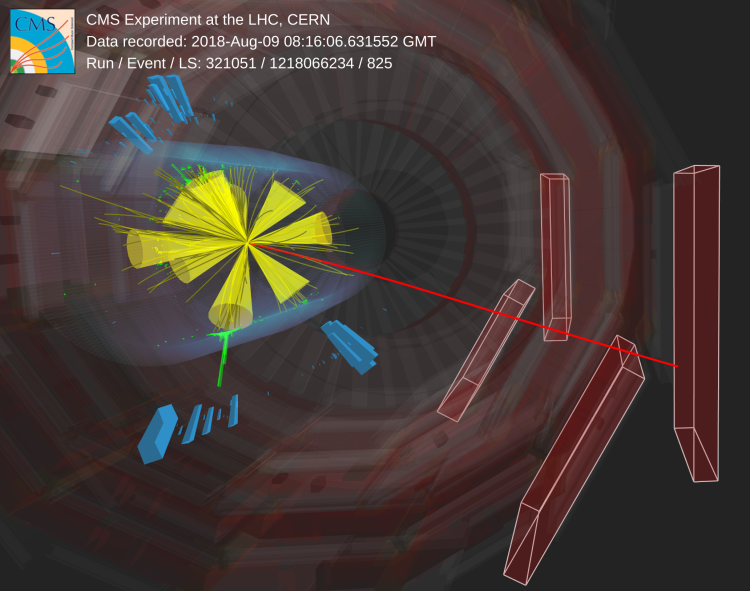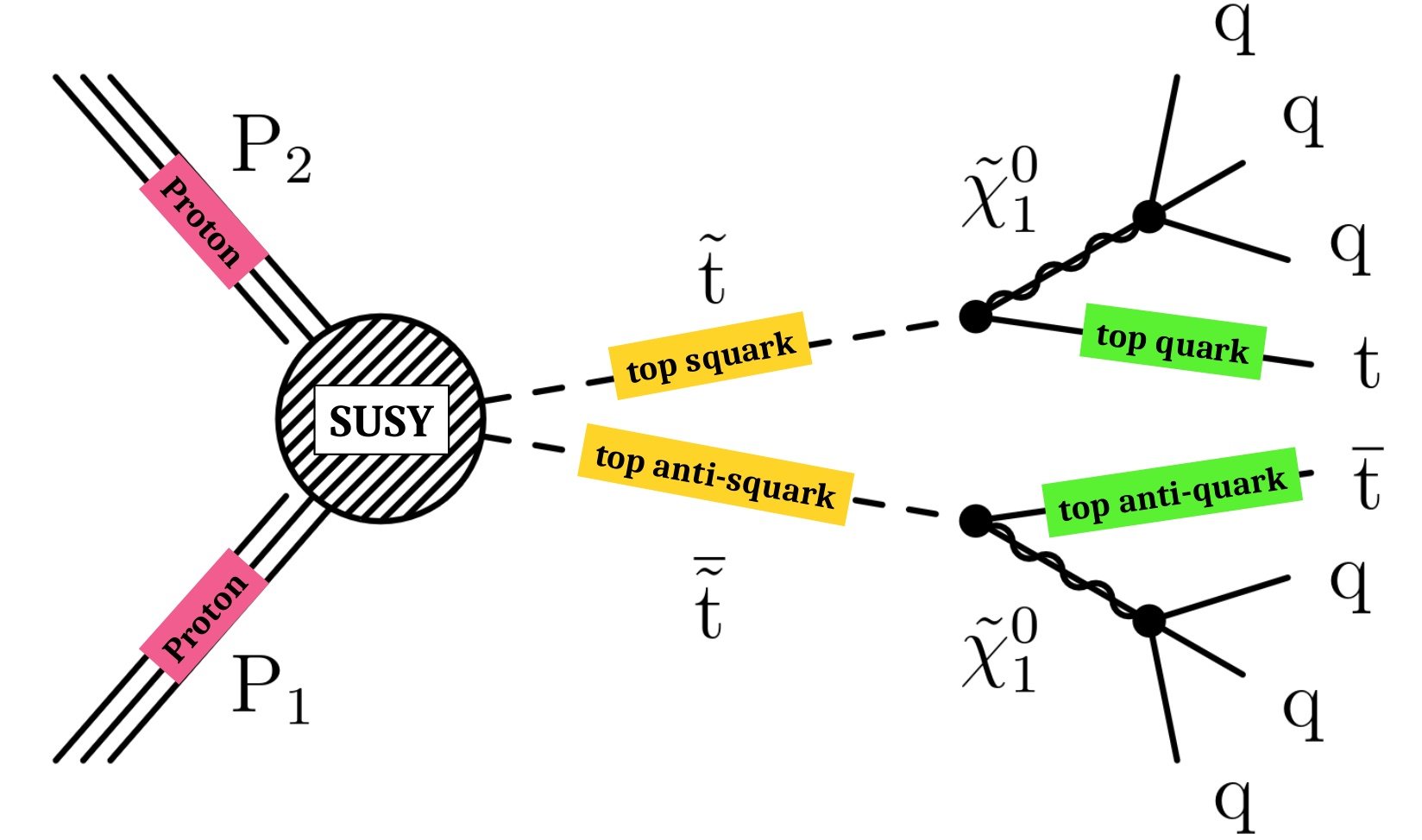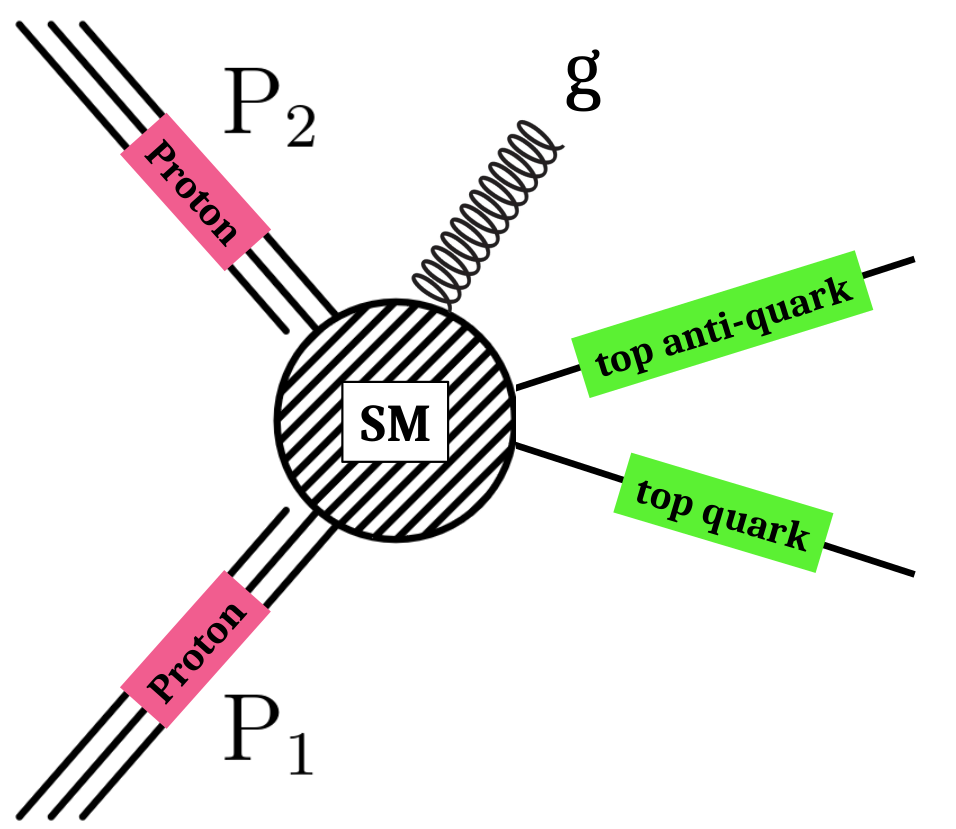
Supersymmetry, or SUSY in short, is an exciting and beautiful theory that answers some of the open questions in particle physics, predicting that all known particles have a partner (a superpartner!) with somewhat different properties. For example, the heaviest quark of the standard model, the top quark, would have a superpartner, top squark, or briefly “stop”. While SUSY is still a dream, in 2021 the CMS Collaboration analyzed some data that looked “suspiciously” like they could contain the footprint of stops. In that case, “suspiciously” meant that there was less than a 5% chance that data containing only known particles could look like that. Instead of waiting many years to collect more data to hopefully reproduce this behavior, the CMS Collaboration decided to reanalyze the same data but with top notch techniques. Maybe this could lead to observing SUSY with the already collected data.
 |
|
Figure 1: A schematic view of the supersymmetric signal (left) that leads to a top quark pair together with multiple quarks (q) that are lighter and turn into jets, as well as the standard model top quark pair production with an additional gluon (right) that will produce a jet.
In the new round of analysis, the CMS Collaboration searched for the simultaneous production of two stops. As shown in Fig. 1, these stops decay each to a top quark and to several lighter quarks or gluons, which form bound states known as hadrons. Hadrons are mostly unstable and decay further. The process creates clusters of particles in what we reconstruct as “jets”. The signal footprint is therefore two top quarks and many jets. Unfortunately, this is a very similar footprint to that of one of the most common processes in the standard model: the pair production of top quarks. It is also very difficult to accurately simulate this background when we require a lot of jets in the event – imagine more gluons in Fig. 1 (right) that can also turn into two quarks, each producing a jet.
The background must be determined from data and a traditional method makes use of two uncorrelated observables. The data can be divided into four regions (ABC and D) depending on the value of each observable being large or small. The divisions are designed such as to provide a region dominated by the signal, a region dominated by backgrounds, and two intermediate regions. Following the mathematics of probabilities for independent quantities, one can estimate the background in the signal-dominated region using the information from other regions. This ABCD method turned out to be very challenging in our search for stop, as all simple variables are correlated in this search.
Physicists in the CMS Collaboration have now implemented an innovative approach based on advanced machine-learning techniques to determine a pair of optimal variables that have a minimal level of correlation. These two variables are then used to divide the data into the four aforementioned regions. Figure 2 shows the correlation between the two variables for the signal and the background, and demonstrates that the signal mostly lies only in region “A”.

Figure 2: Density distribution for signal (red) and background events (gray) in the “A”, “B”, “C”, and “D” regions, defined on the basis of two uncorrelated variables (SNN1 and SNN2) determined using machine learning.
Using the novel method, the CMS Collaboration was able to accurately predict the dominant background in this analysis from observed data, without relying on simulations which have large uncertainties associated with the modeling of the jet multiplicity distribution. This allowed for a large gain in analysis sensitivity. If the signal hinted by the 2021 analysis had been real, it would now have been observed without any doubt. Along the same lines, not seeing a signal in this analysis has given us enough assurance that, in specific SUSY scenarios, a stop decaying ultimately to top quarks and jets must have a mass greater than 700 GeV. We are eagerly looking forward to analyzing the data of the ongoing LHC Run 3 to go even further and to find where Nature hides its answers for us.
Read more about these results:
-
CMS Physics Analysis Summary (SUS-23-001): " Search for top squarks in final states with many light flavor jets and 0, 1, or 2 leptons in proton-proton collisions at 13 TeV"
-
@CMSExperiment on social media: LinkedIn - facebook - twitter - instagram
- Do you like these briefings and want to get an email notification when there is a new one? Subscribe here


